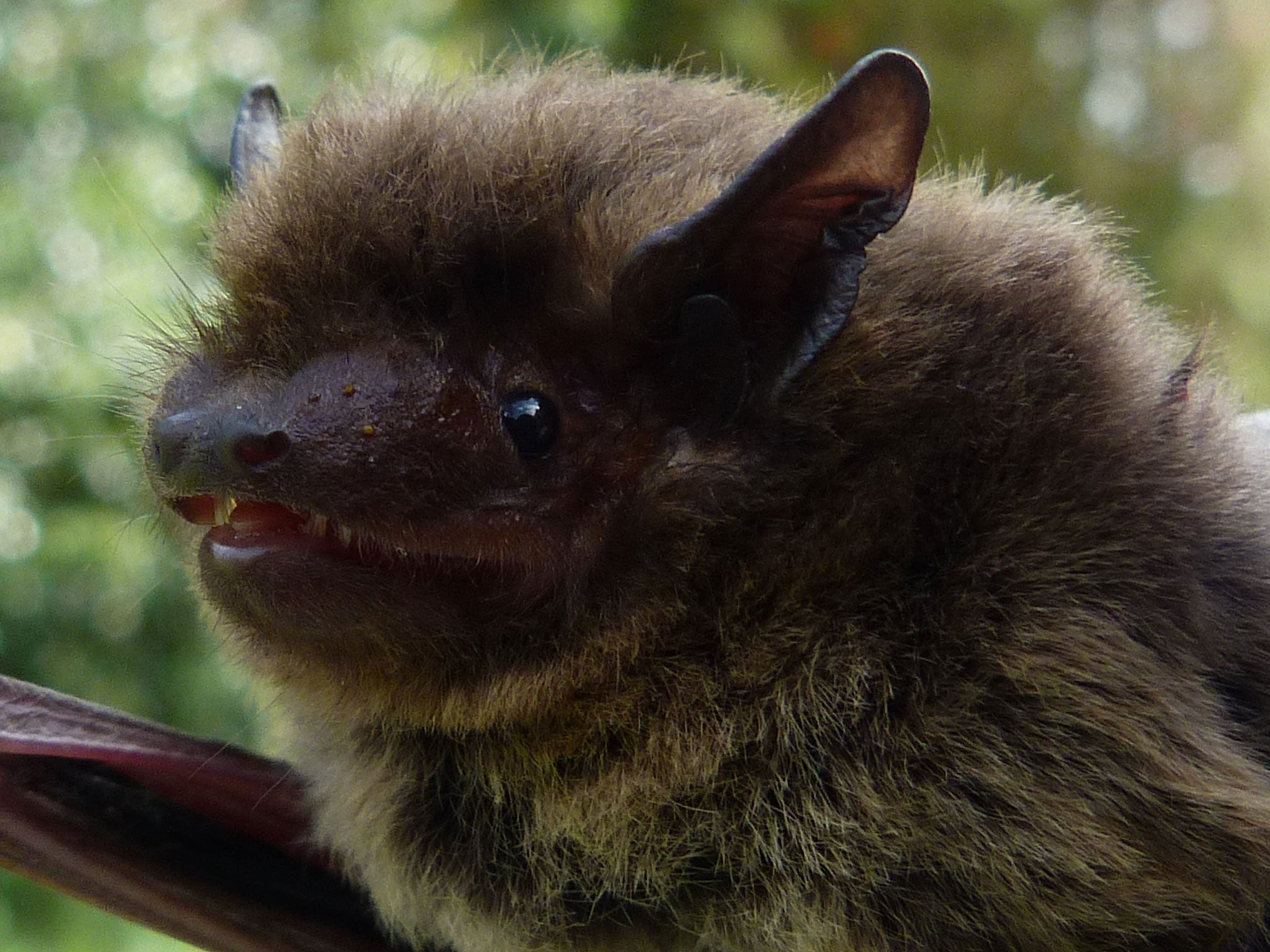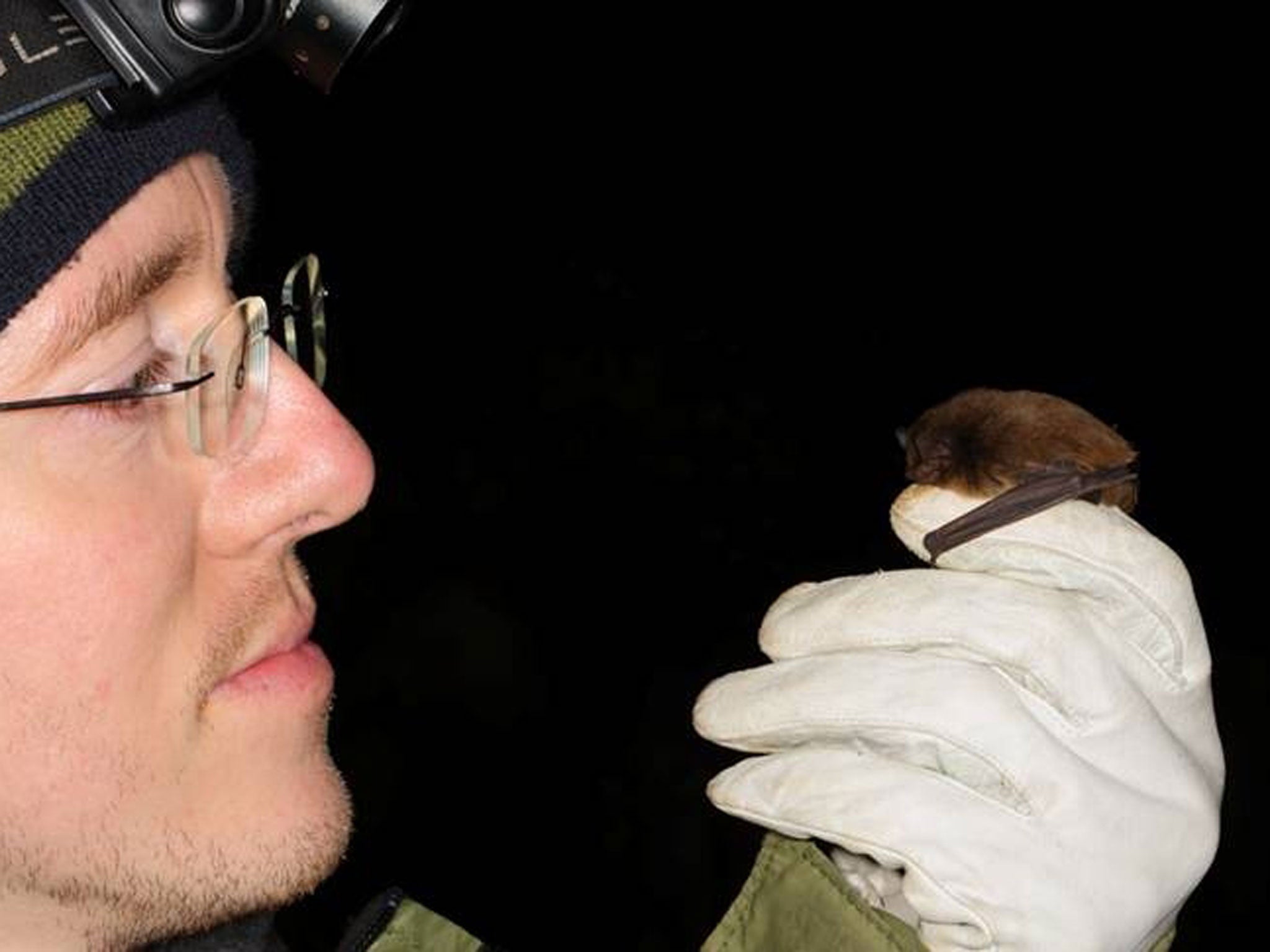English pipistrelle’s record journey to Europe proves bats can fly across seas

A tiny bat the size of a human thumb has become the first to be recorded crossing the North Sea from Britain to mainland Europe – before meeting an untimely end in the Netherlands.
The lifeless body of the Nathusius’ pipistrelle, which weighs just 7.6g, was discovered in a farmyard fruit-storing shed in the village of Pietersbierum on the north coast of the Netherlands.
It died 370 miles from where it was tagged with a “weightless” metal ring 15 months earlier at Blagdon, near Bristol.
It is thought that the record-breaking mammal may have died from exhaustion, although it is also possible that it may have been crushed by a fruit pallet.
“We have hypothesised for a long time about the migration of bats to and from the UK but it’s very difficult to prove,” said Daniel Hargreaves of the Bat Conservation Trust, who put the ring on the animal.
“This finding was a great surprise and is helping us to understand the huge journeys that these bats can make.
“We already knew that bats migrated over incredibly long distances over land, but were not sure whether they flew over the sea.
“As a result of this finding, we suspect that this in fact happens quite a lot.
“Until now, there had been several records of bats landing on oil platforms or boats in the North Sea but this is the first time we can be sure that a bat not only made its way from one side of England to the other but then crossed the sea as well,” he added.

The exact route taken by the bat is unknown, but it is thought most likely that it passed through Kent, over the English Channel, and then proceeded north-east along the French, Belgian and Dutch coasts.
Dr Fiona Mathews, a senior lecturer in mammalian biology at the University of Exeter, said the finding potentially had repercussions for wind power, because turbine blades are the bane of bats’ lives.
“Nathusius’ pipistrelle is one of the species most at risk from land-based wind turbines throughout Europe,” she said.
“We now urgently need to identify the migration routes they use to cross the sea between the UK and continental Europe. Offshore wind farms in the wrong place could be very bad news.”
Dr Mathews has installed bat detectors on board Brittany Ferries crossing to and from south-west England.
She is analysing the data to find out when and where bats are recorded at sea, and says there is now clearly a need to extend these to include the North Sea.
The reddish-brown furred Nathusius’ pipistrelle is extremely rare in the UK. Tiny though it is – being typically between 46mm and 55mm in length – it is slightly larger than the more-numerous common and soprano pipistrelles.
The fur on its back is longer, giving it a shaggy appearance. It was first recorded on the Shetland Islands in 1940.
Fantastic voyagers: Long-range animals
Cuckoos
One of the best known long-distance migrators, the cuckoo completes a remarkable 10,000-mile journey every year, travelling from the UK to central African countries such as the Democratic Republic of Congo in the autumn, before returning in the spring.
Red-necked Phalarope
This small wading bird travels up to 16,000 miles, in some cases from the Shetland island of Fetlar to Peru, via Greenland and the Caribbean, and back.
Painted Lady butterfly
Mainly born and bred on the African side of the Mediterranean, it journeys north across Europe, arriving in Britain in the mid to late summer.
Saiga antelope
This species travels vast distances over land, in some cases navigating the entire length of Kazakhstan, a distance of about 1,000 miles.
Reindeer
They travel several hundred miles between the forests and open tundra of Scandinavia and Russia.
Common eel
Spawns in the Sargasso Sea, close to Bermuda, before migrating to Europe to mature and returning to Bermuda to spawn again.
Join our commenting forum
Join thought-provoking conversations, follow other Independent readers and see their replies
0Comments